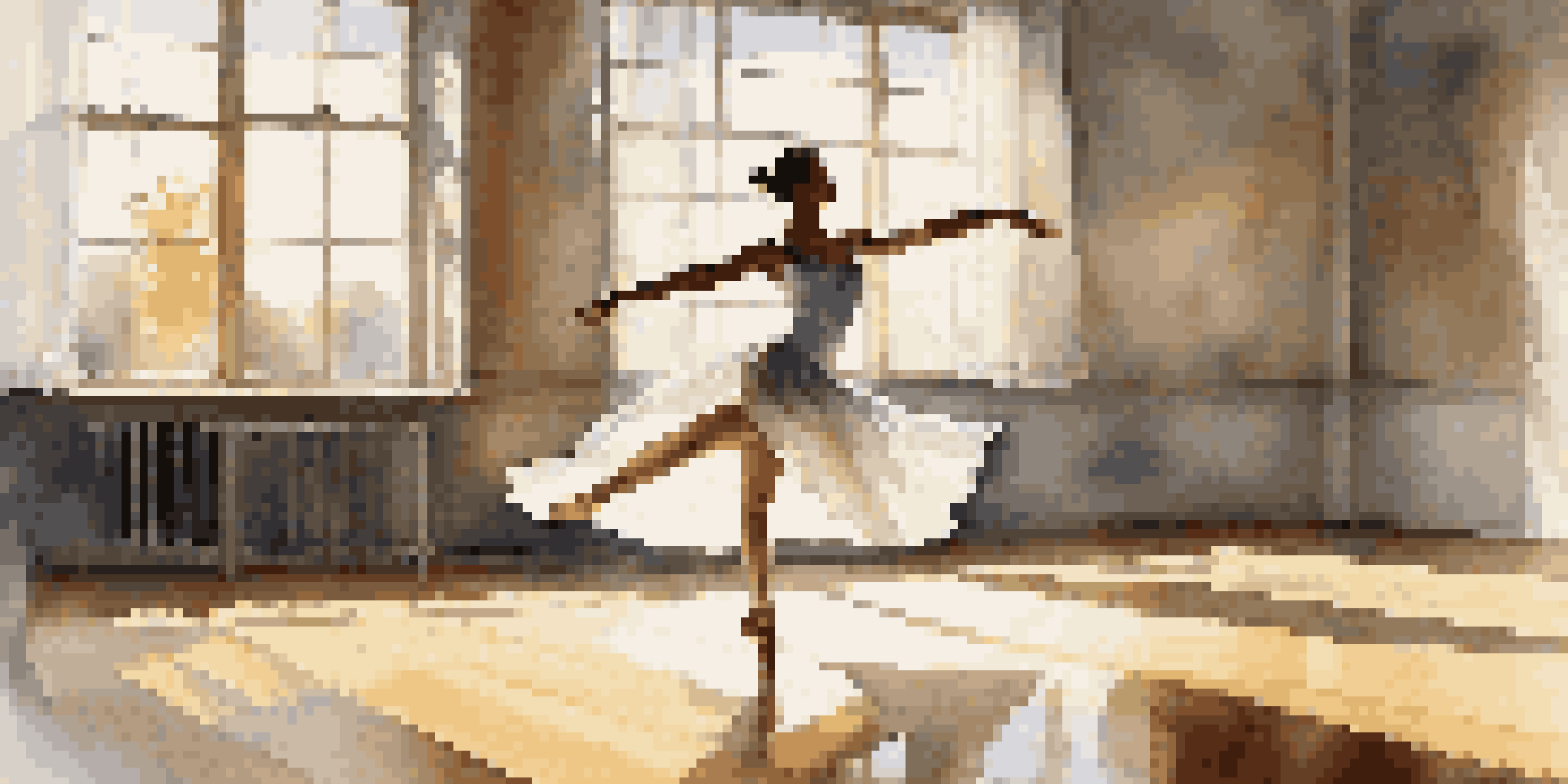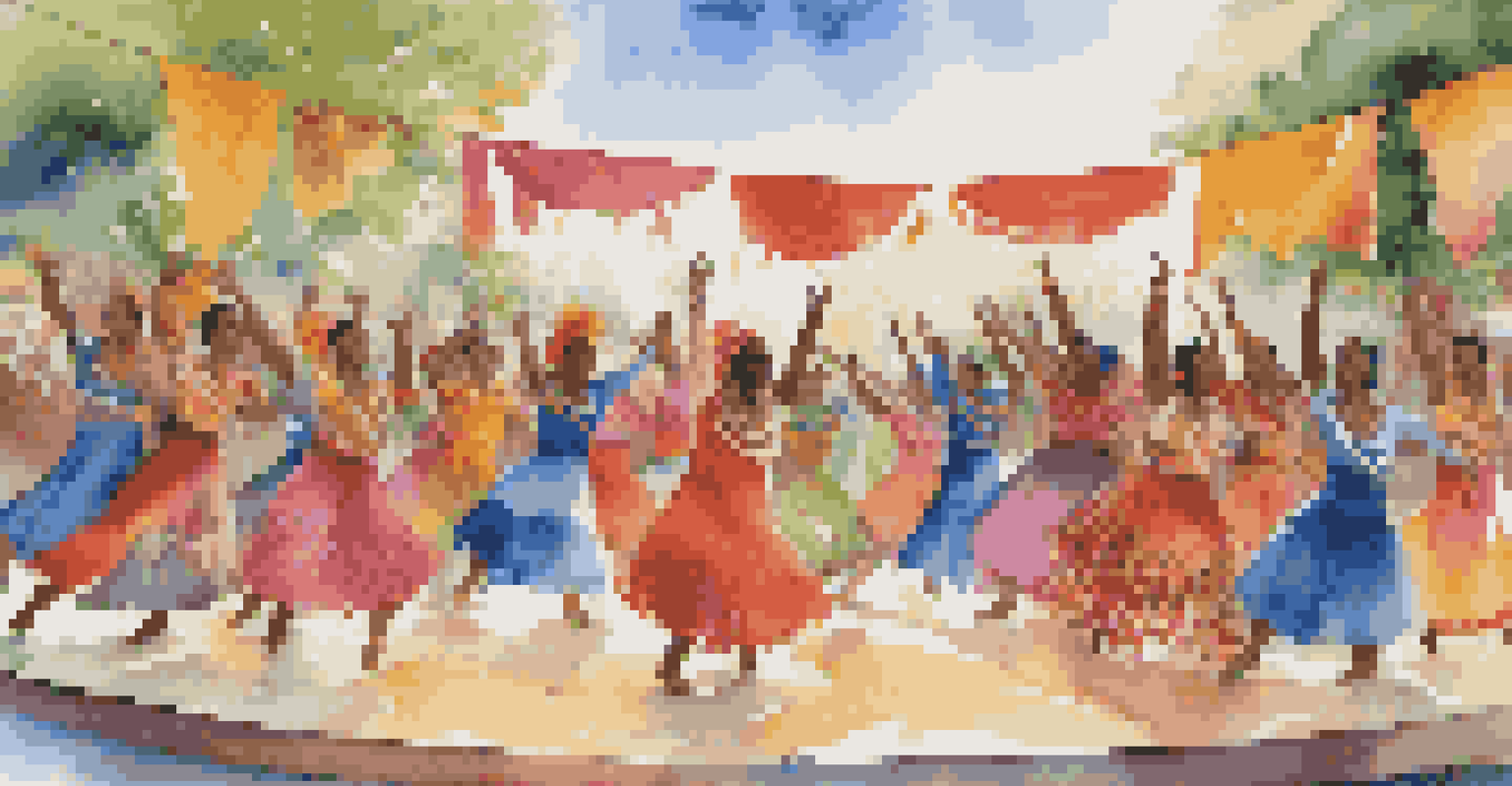Dance and the Body: An Exploration of Movement and Emotion

The Connection Between Dance and Emotion
Dance is a unique form of expression that connects deeply with our emotions. Each movement can convey feelings that words often cannot capture. Whether it's joy, sorrow, or anger, dance allows us to communicate complex emotions through our bodies.
Dance is the hidden language of the soul.
For example, a dancer’s fluid movements might evoke a sense of peace, while sharp, quick motions could express tension or urgency. This ability to translate feelings into physical form makes dance a powerful medium for storytelling.
Moreover, the emotional connection in dance can resonate with audiences on a personal level, allowing them to reflect on their own experiences. In this way, dance not only expresses individual feelings but also fosters a shared emotional experience.
The Body as an Instrument of Expression
In dance, the body serves as a vital instrument for conveying emotion and storytelling. Each part of the body can be utilized to express different sentiments, from the fingertips to the toes. Movements can be subtle or exaggerated, depending on the emotion being conveyed.

For instance, a gentle sway of the hips may express a feeling of nostalgia, while powerful leaps can symbolize freedom or triumph. The way dancers use their bodies to accentuate or diminish movements adds layers of meaning to their performance.
Dance as Emotional Expression
Dance uniquely conveys complex emotions that words often cannot capture, allowing for personal and shared storytelling.
Additionally, the physicality of dance encourages a deeper connection between the dancer and their audience. As viewers watch the intricate movements of the body, they are invited to feel and interpret the emotions being portrayed.
Cultural Influences on Dance and Emotion
Cultural backgrounds play a significant role in shaping the way dance is performed and understood. Different cultures have unique styles, movements, and meanings associated with dance, all of which can express a range of emotions. For example, traditional Indian dance forms often use intricate hand gestures and facial expressions to tell stories and convey feelings.
The dance is a poem of which each movement is a word.
As dancers incorporate their cultural heritage into their movements, they not only express personal emotions but also honor their traditions. This blend of personal and cultural expression enriches the dance experience for both performers and audiences.
Moreover, cultural influences can create a shared emotional landscape, allowing viewers from similar backgrounds to connect with the performance on a deeper level. This connection highlights the universality of emotions across different cultures.
Dance as a Form of Healing and Therapy
Dance is increasingly recognized for its therapeutic benefits, serving as a powerful tool for emotional healing. Dance therapy encourages individuals to express their feelings through movement, which can be especially beneficial for those who struggle to articulate their emotions verbally. This form of therapy can help individuals connect with their bodies and release pent-up emotions.
For example, someone dealing with grief might find solace in movements that reflect their sorrow, allowing them to process their feelings in a safe environment. Similarly, people with anxiety can use dance to channel their nervous energy into something creative and liberating.
Cultural Influences in Dance
Cultural backgrounds shape dance styles and meanings, enriching emotional expression and connecting performers with their heritage.
The healing power of dance lies in its ability to foster self-awareness and emotional release. By embracing movement as a form of therapy, individuals can find a path to emotional freedom and resilience.
The Role of Music in Dance and Emotion
Music is an essential element in dance that enhances the emotional experience. The rhythm, melody, and lyrics can all influence how a dancer moves and how an audience feels. For instance, a fast-paced song might inspire lively, upbeat movements, while a slow ballad could evoke graceful, fluid motions.
This connection between music and dance creates a harmonious relationship where each element complements the other. The emotional tone of the music can guide the dancer's expression, adding depth to their performance.
Additionally, audiences often respond emotionally to the combination of music and dance, creating a shared experience that transcends words. This synergy can evoke powerful feelings, making dance an unforgettable experience.
The Impact of Dance on Personal Identity
For many individuals, dance is more than just a form of expression; it is a significant aspect of their personal identity. Dance allows people to explore and express their uniqueness, helping them connect with their true selves. This exploration can lead to a profound understanding of one’s emotions and experiences.
For example, a dancer may discover their passion for a particular style that resonates with their personality, allowing them to express emotions that they might not otherwise articulate. This journey of self-discovery through dance can be empowering and transformative.
Dance Therapy for Healing
Dance serves as a therapeutic tool that helps individuals articulate and process their emotions through movement.
Furthermore, sharing one’s dance with others can foster connections and build community. As individuals embrace their identities through movement, they create a space for others to do the same, promoting inclusivity and understanding.
The Future of Dance as an Emotional Medium
As we look to the future, the role of dance as a medium for expressing emotion will continue to evolve. With advancements in technology, new forms of dance and performance art are emerging, allowing for even greater exploration of movement and emotion. Virtual reality and digital platforms are beginning to change how we experience dance, making it more accessible to diverse audiences.
These innovations can provide fresh opportunities for dancers to express their emotions in ways that resonate with contemporary audiences. As societal norms shift, dance will likely reflect these changes, highlighting new emotional landscapes.

Ultimately, the future of dance promises to be a dynamic exploration of movement and emotion. As we embrace these changes, we can look forward to witnessing the continued power of dance in connecting us to our feelings and each other.